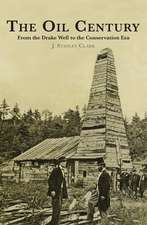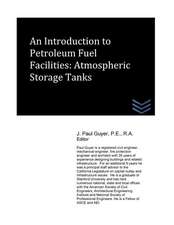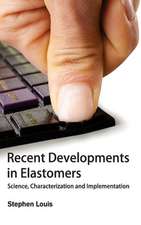Intelligent Digital Oil and Gas Fields: Concepts, Collaboration, and Right-Time Decisions
Autor Gustavo Carvajal, Marko Maucec, Stan Cullicken Limba Engleză Paperback – 4 dec 2017
The book then takes the reader on a journey first at a well level through instrumentation and measurement for real-time data acquisition, and then provides practical information on analytics on the real-time data. Artificial intelligence techniques provide insights from the data. The road then travels to the "integrated asset" by detailing how companies utilize Integrated Asset Models to manage assets (reservoirs) within DOF context. From model to practice, new ways to operate smart wells enable optimizing the asset.
Intelligent Digital Oil and Gas Fields is packed with examples and lessons learned from various case studies and provides extensive references for further reading and a final chapter on the "next generation digital oil field," e.g., cloud computing, big data analytics and advances in nanotechnology. This book is a reference that can help managers, engineers, operations, and IT experts understand specifics on how to filter data to create useful information, address analytics, and link workflows across the production value chain enabling teams to make better decisions with a higher degree of certainty and reduced risk.
- Covers multiple examples and lessons learned from a variety of reservoirs from around the world and production situations
- Includes techniques on change management and collaboration
- Delivers real and readily applicable knowledge on technical equipment, workflows and data challenges such as acquisition and quality control that make up the digital oil and gas field solutions of today
- Describes collaborative systems and ways of working and how companies are transitioning work force to use the technology and making more optimal decisions
Preț: 573.74 lei
Preț vechi: 734.39 lei
-22% Nou
Puncte Express: 861
Preț estimativ în valută:
109.80€ • 114.21$ • 90.65£
109.80€ • 114.21$ • 90.65£
Carte tipărită la comandă
Livrare economică 07-21 aprilie
Preluare comenzi: 021 569.72.76
Specificații
ISBN-13: 9780128046425
ISBN-10: 0128046422
Pagini: 374
Ilustrații: 200 illustrations
Dimensiuni: 152 x 229 x 23 mm
Greutate: 0.5 kg
Editura: ELSEVIER SCIENCE
ISBN-10: 0128046422
Pagini: 374
Ilustrații: 200 illustrations
Dimensiuni: 152 x 229 x 23 mm
Greutate: 0.5 kg
Editura: ELSEVIER SCIENCE
Cuprins
1. Introduction to Digital Oil and Gas Field Systems2. Instrumentation and Measurement3. Data Filtering and Conditioning4. Components of Artificial Intelligence and Data Analytics5. Workflow Automation and Intelligent Control6. Integrated Asset Management and Optimization Workflows7. Smart Wells and Techniques for Reservoir Monitoring8. Transitioning to Effective DOF Enabled by Collaboration and Management of Change9. The Future Digital Oil Field
Recenzii
"Chapters are pitched at a very accessible level and should be useful for giving students and domain specialists a good (if uncritical) view of the big picture. Coverage includes a fairly extensive top-level treatment of AI and machine learning in predictive analysis of equipment failure. A must-read for all practitioners." --Oil IT Journal
"A comprehensive guide to the digital oilfield from well-qualified specialists."
Intelligent Digital Oil and Gas Fields (IDOF) by Gustavo Carvajal (BP America), Marco Maucec (Saudi Aramco) and Stan Cullick (Rare Petro) is a 350-page, information-packed resumé of the digital oilfield movement. The authors experience of the DOF began in the mid 2000s when, as specialists from Halliburton, they worked on Kuwait Oil’s flagship KwIDF project.
An introductory chapter sets out the essential technological and business underpinnings of the DOF and provides a brief outline of major industry initiatives, Shell’s Smart Fields, BP’s Field of the Future, Integrated Operations initiatives from ConocoPhillips and Statoil and I-Fields from Aramco and Chevron.
Other chapters cover instrumentation, data conditioning (but not data management – see below), analytics, workflow automation and smart wells. These are pitched at a very accessible level and should be useful for giving students and domain specialists a good (if uncritical) view of the big picture. Coverage includes a fairly extensive top-level treatment of AI and machine learning in predictive analysis of equipment failure.
The workflow automation chapter covers all bases but suffers from an issue that permeates IDOF. The authors share the Society of Petroleum Engineers’ reluctance to name to a piece of software. This misguided avoidance of ‘commerciality’ is curious. Is all software ‘commodity?’ Can a book about the digital oilfield be written without mentioning the PI System?
The topic of data management is touched on in the introduction but poorly developed elsewhere in IDOF which may well reflect the state of the art! The introduction has it that in the early days, oils though that the DOF was ‘simply IT or data management,’ while ‘it is so much more.’ It is indeed, as Oil IT Journal has demonstrated since well before the DOF was dreamed-up. Shame you forgot to mention that guys! No hard feelings though, IDOF is a major undertaking and significant contribution to the DOF literature. A must-read for all practitioners." --Intelligent Digital Oil and Gas Fields by Neil McNaughton, Editor, Oil IT Journal
"A comprehensive guide to the digital oilfield from well-qualified specialists."
Intelligent Digital Oil and Gas Fields (IDOF) by Gustavo Carvajal (BP America), Marco Maucec (Saudi Aramco) and Stan Cullick (Rare Petro) is a 350-page, information-packed resumé of the digital oilfield movement. The authors experience of the DOF began in the mid 2000s when, as specialists from Halliburton, they worked on Kuwait Oil’s flagship KwIDF project.
An introductory chapter sets out the essential technological and business underpinnings of the DOF and provides a brief outline of major industry initiatives, Shell’s Smart Fields, BP’s Field of the Future, Integrated Operations initiatives from ConocoPhillips and Statoil and I-Fields from Aramco and Chevron.
Other chapters cover instrumentation, data conditioning (but not data management – see below), analytics, workflow automation and smart wells. These are pitched at a very accessible level and should be useful for giving students and domain specialists a good (if uncritical) view of the big picture. Coverage includes a fairly extensive top-level treatment of AI and machine learning in predictive analysis of equipment failure.
The workflow automation chapter covers all bases but suffers from an issue that permeates IDOF. The authors share the Society of Petroleum Engineers’ reluctance to name to a piece of software. This misguided avoidance of ‘commerciality’ is curious. Is all software ‘commodity?’ Can a book about the digital oilfield be written without mentioning the PI System?
The topic of data management is touched on in the introduction but poorly developed elsewhere in IDOF which may well reflect the state of the art! The introduction has it that in the early days, oils though that the DOF was ‘simply IT or data management,’ while ‘it is so much more.’ It is indeed, as Oil IT Journal has demonstrated since well before the DOF was dreamed-up. Shame you forgot to mention that guys! No hard feelings though, IDOF is a major undertaking and significant contribution to the DOF literature. A must-read for all practitioners." --Intelligent Digital Oil and Gas Fields by Neil McNaughton, Editor, Oil IT Journal




















